fall inside a hole
First Try Sets (2000, 2001)
First written August 24, 2023The "First Try" series of sets were very small "starter" (or, indeed, "first try") sets that typically included an engine, a single carriage, and a small selection of track and accessories. The first series of three (red, white, and blue) had the subtitle でんしゃであそぼう! (Let's play with the train!) in colorful writing and a cartoony drawn background while the second series (green, black, yellow, dark blue) has real life photographs of the trains included in the set and large English FIRST TRY SET text at the top of the box. The complete range of First Try set boxes can be seen in the Plarail Museum. In 2002 Tomy released a similar series of "starter" sets as the My Town Train Set series.
First Try Set Red (2000)
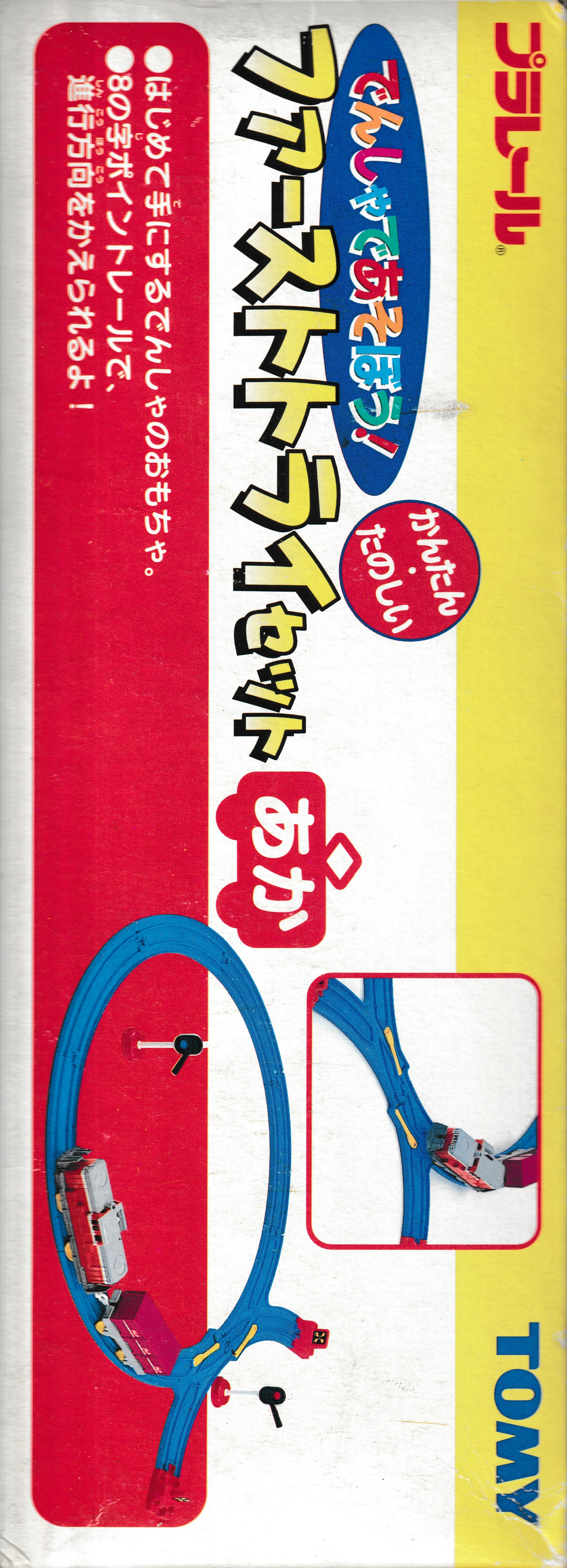
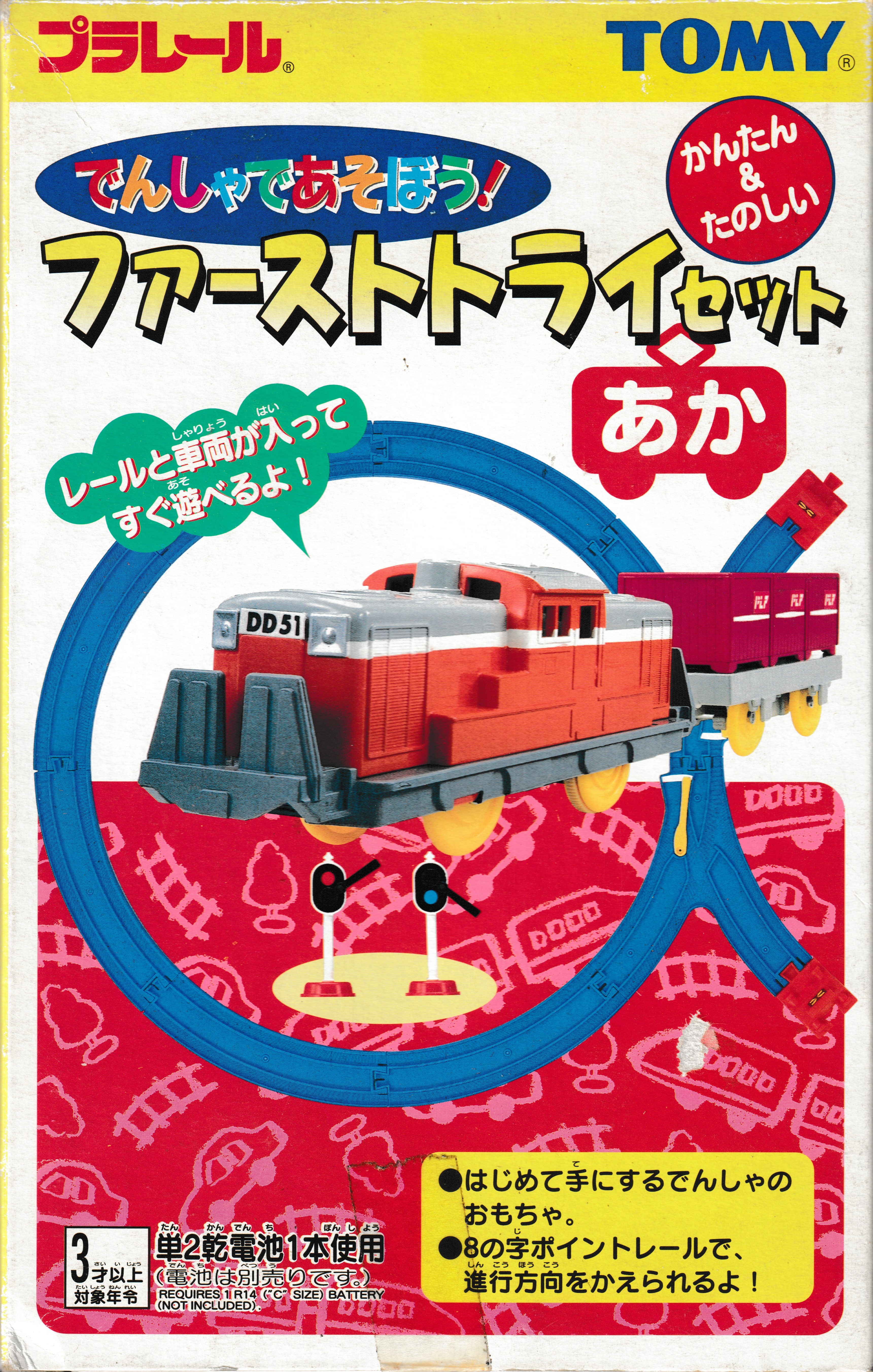
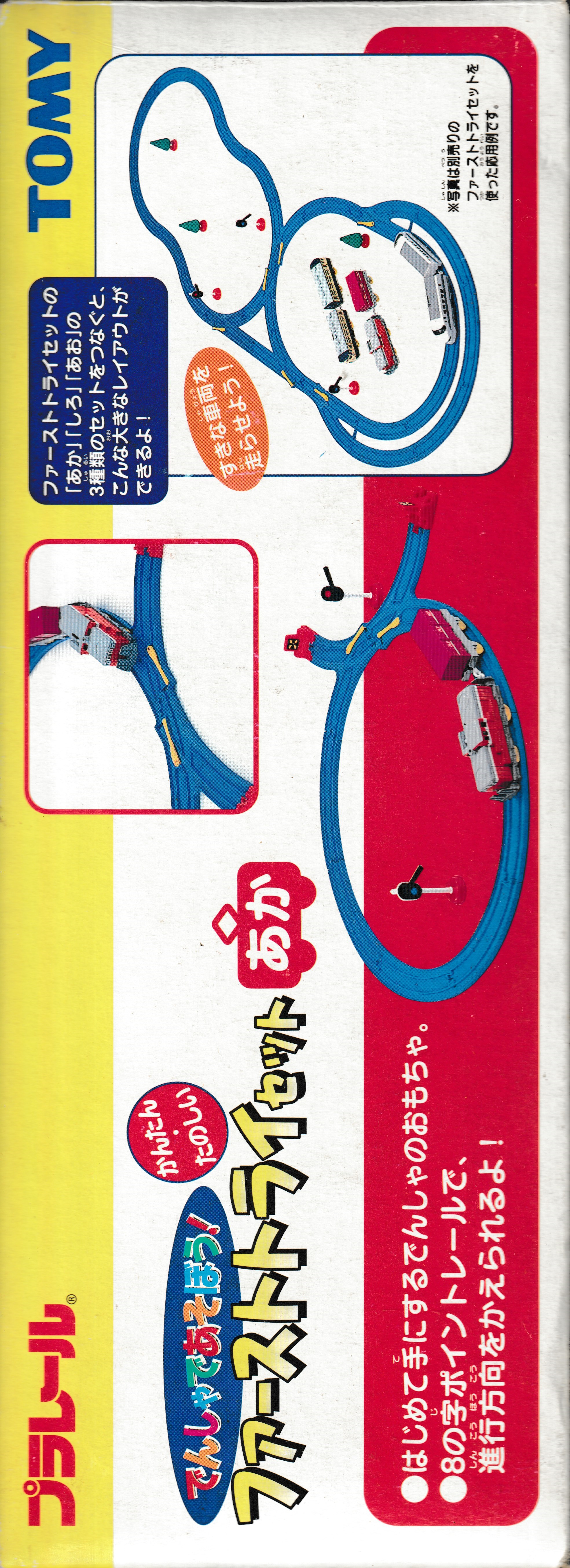
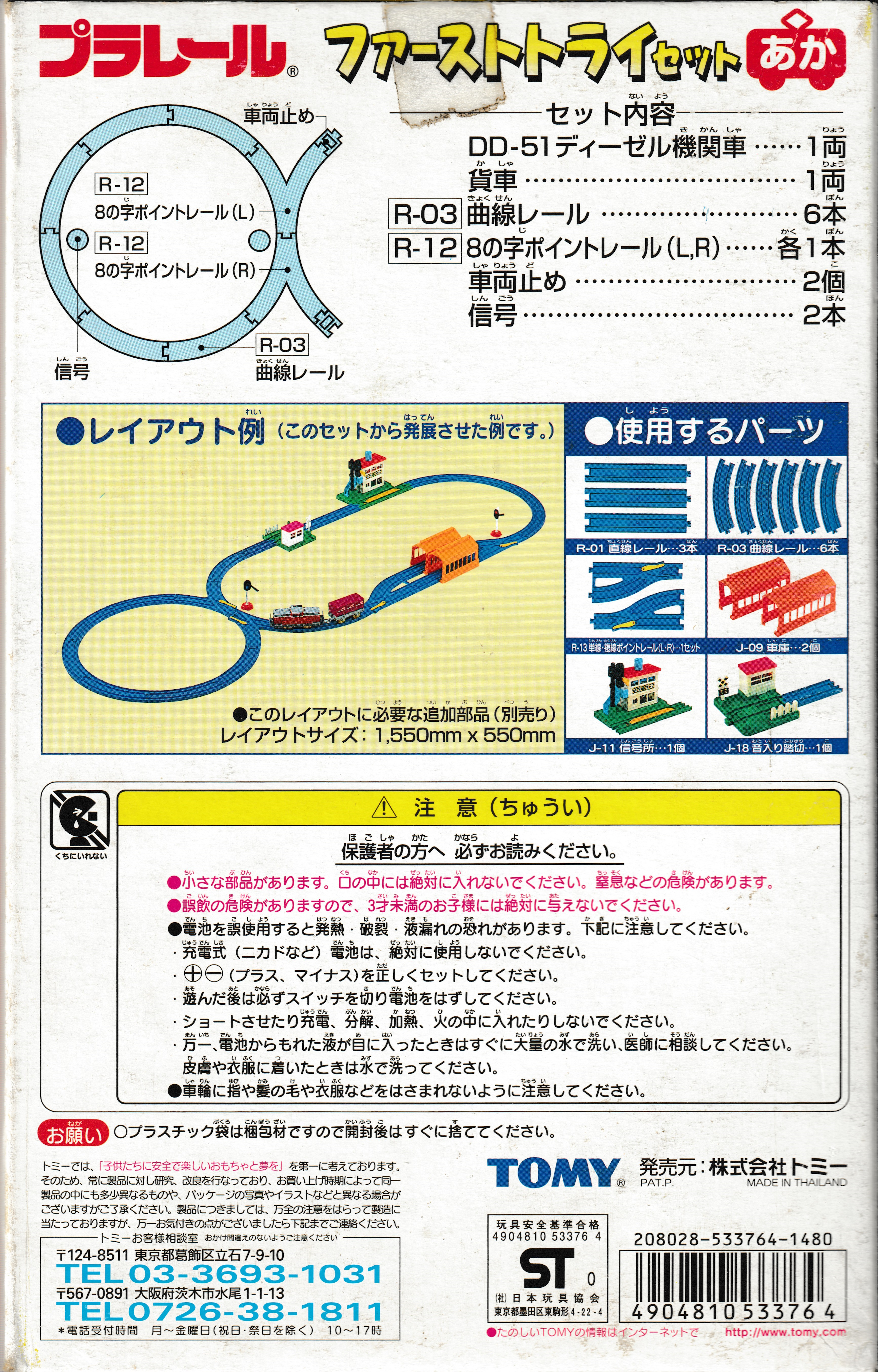
The First Try Set Red (ファーストトライセットあか) was part of the first wave of First Try sets released in 2000. The set includes a new power DD51 with a grey chassis and other detailing that the individual DD51 release did not. The layout is a simple circle with two figure eight turnouts to allow it to connect to other sets or accessories. The back of the box shows a suggested layout that can be made using some of the individual accessories that Tomy sold at the time while the side of the box shows a layout that can be built using the red, white, and blue First Try sets.
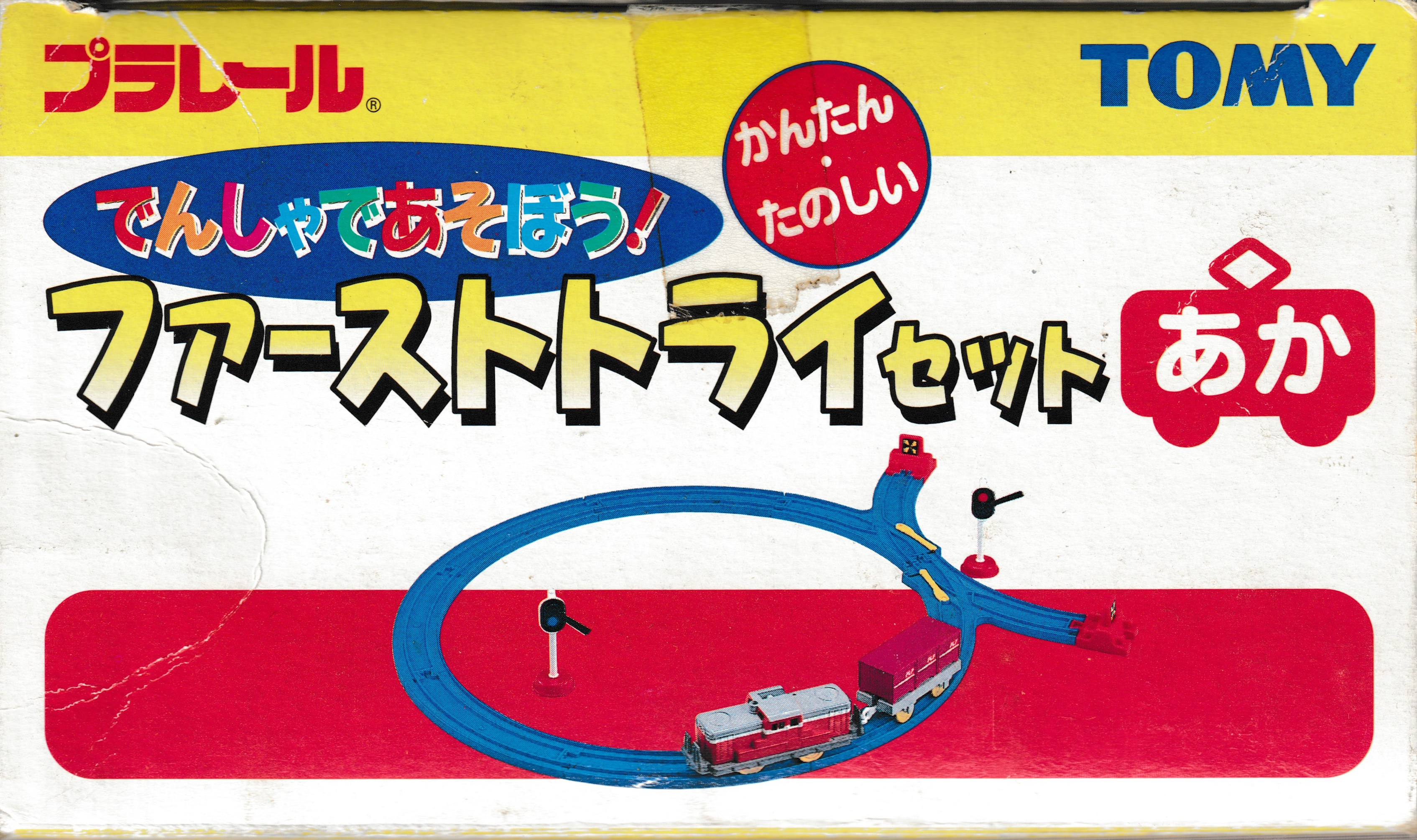
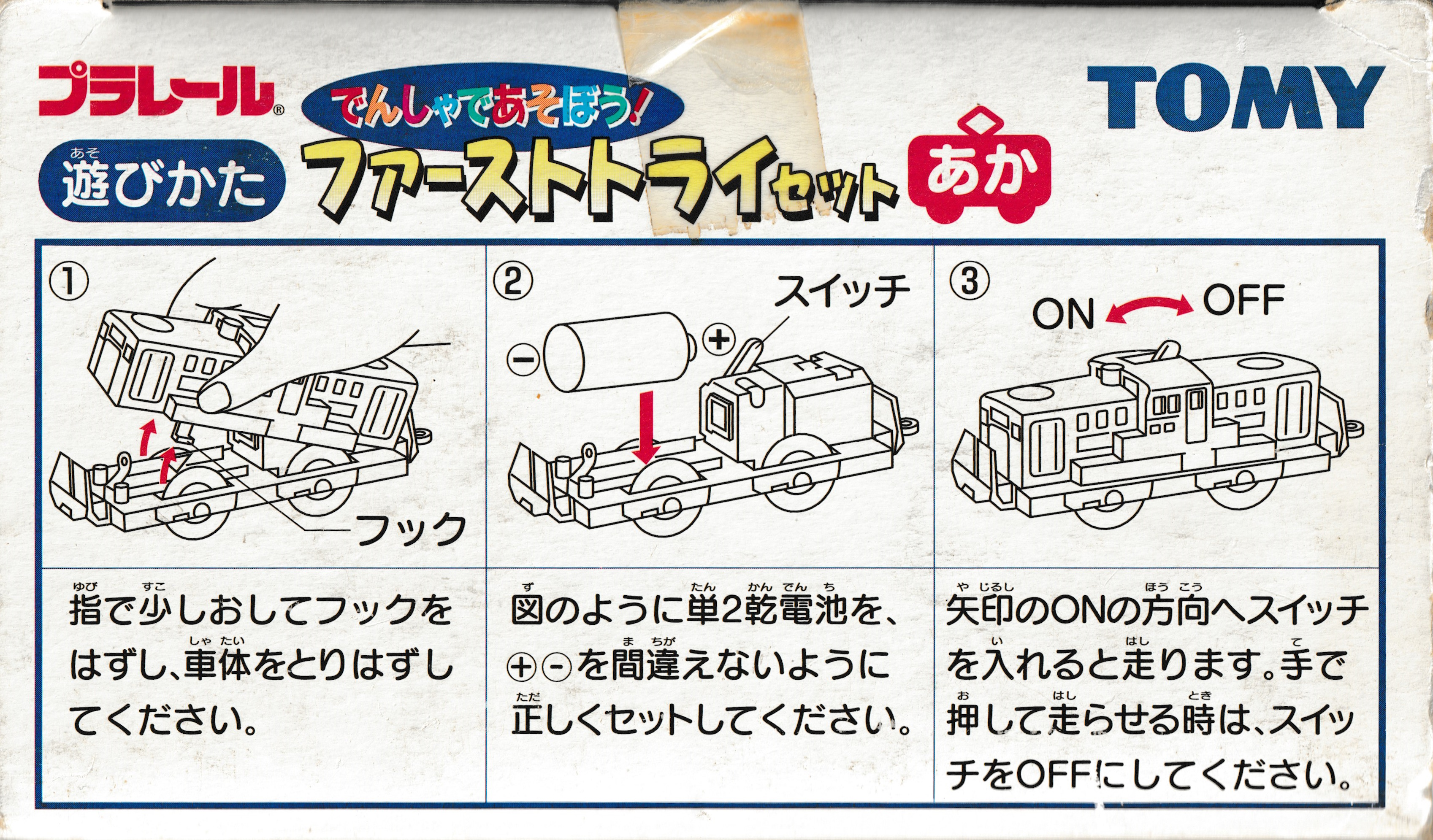
Set contents
| Quantity |
Item |
Photo |
|---|---|---|
| 1 | DD51 (new power, set exclusive detailing) |
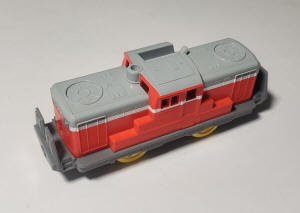 |
| 1 |
Container car (set exclusive variant) |
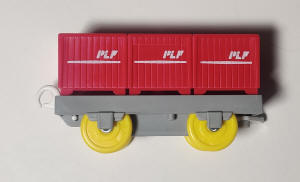 |
| 6 |
R-03 Curve Rail |
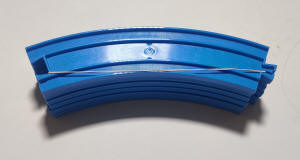 |
| 2
pieces |
R-12 Figure Eight Point Rail (one pair) |
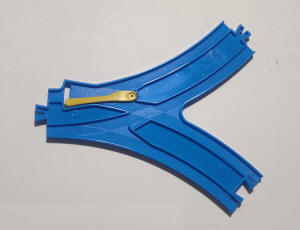 |
| 2 |
Signal |
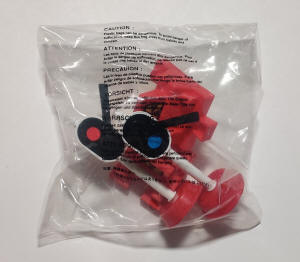 |
| 2 |
Buffer stops |
 |
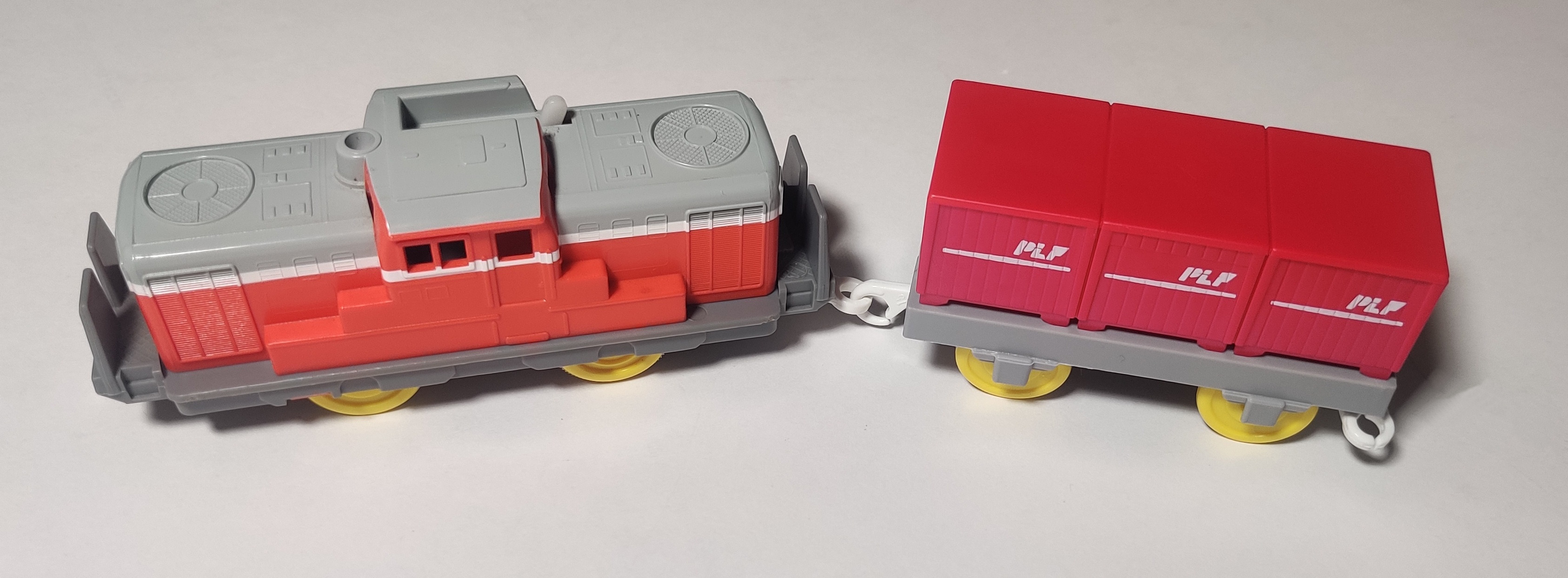
Over 600 DD51 diesel-hydraulic locomotives were built between 1962 and 1978 for main line freight and passenger service. Almost all DD51s built were originally furnished in the orange-red color scheme with a white stripe separating the grey on the upper portion of the locomotive and cab. As of 2021, ten DD51s were still in regular use, two by JR East and eight by JR West.
The standard Plarail DD51 of the time was a new power adaptation of the orange 1970s original with a black chassis and roof. This engine is an early example of Tomy releasing more accurately-liveried trains, with the chassis and cab roof being a more accurate grey instead of black with additional grey on the top of the locomotive as well as the white stripe. I really, really like this DD51, and it may be my second favourite after my original early 1970s old power grey chassis DD51.
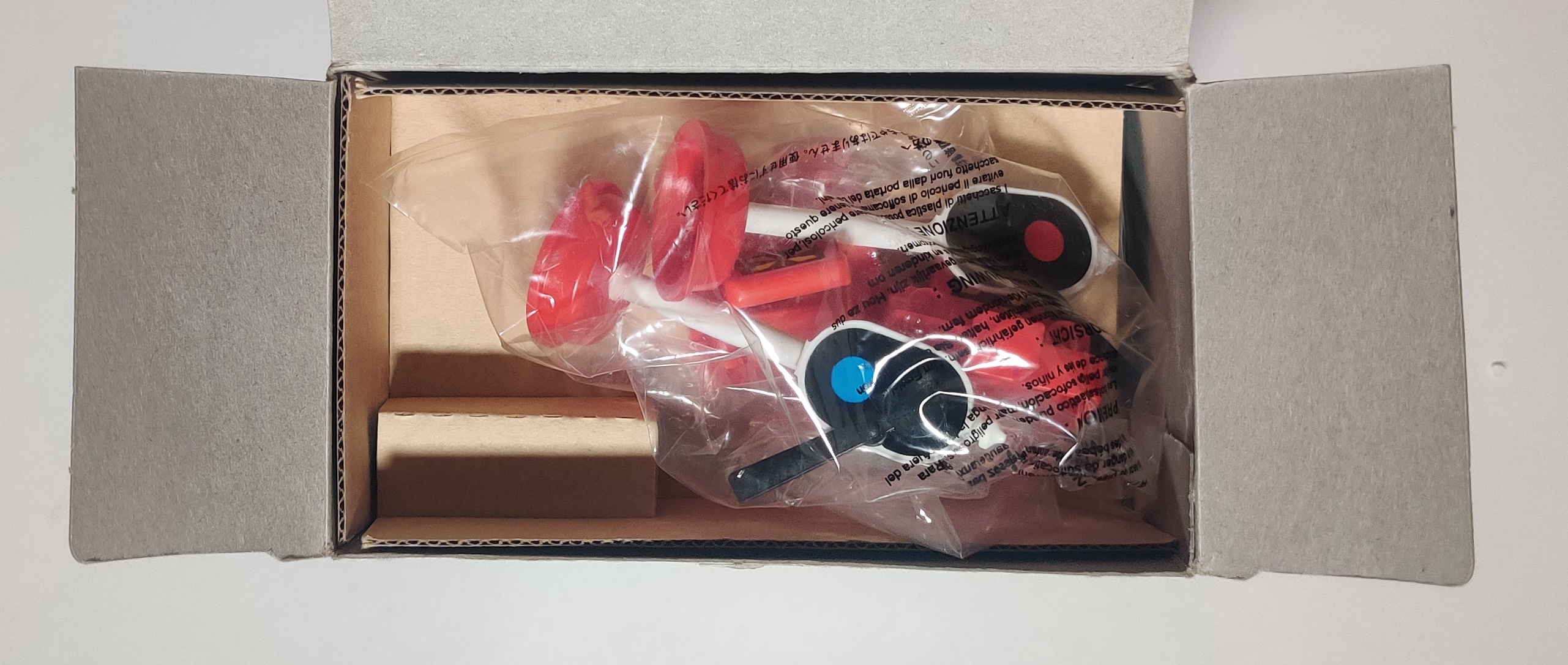
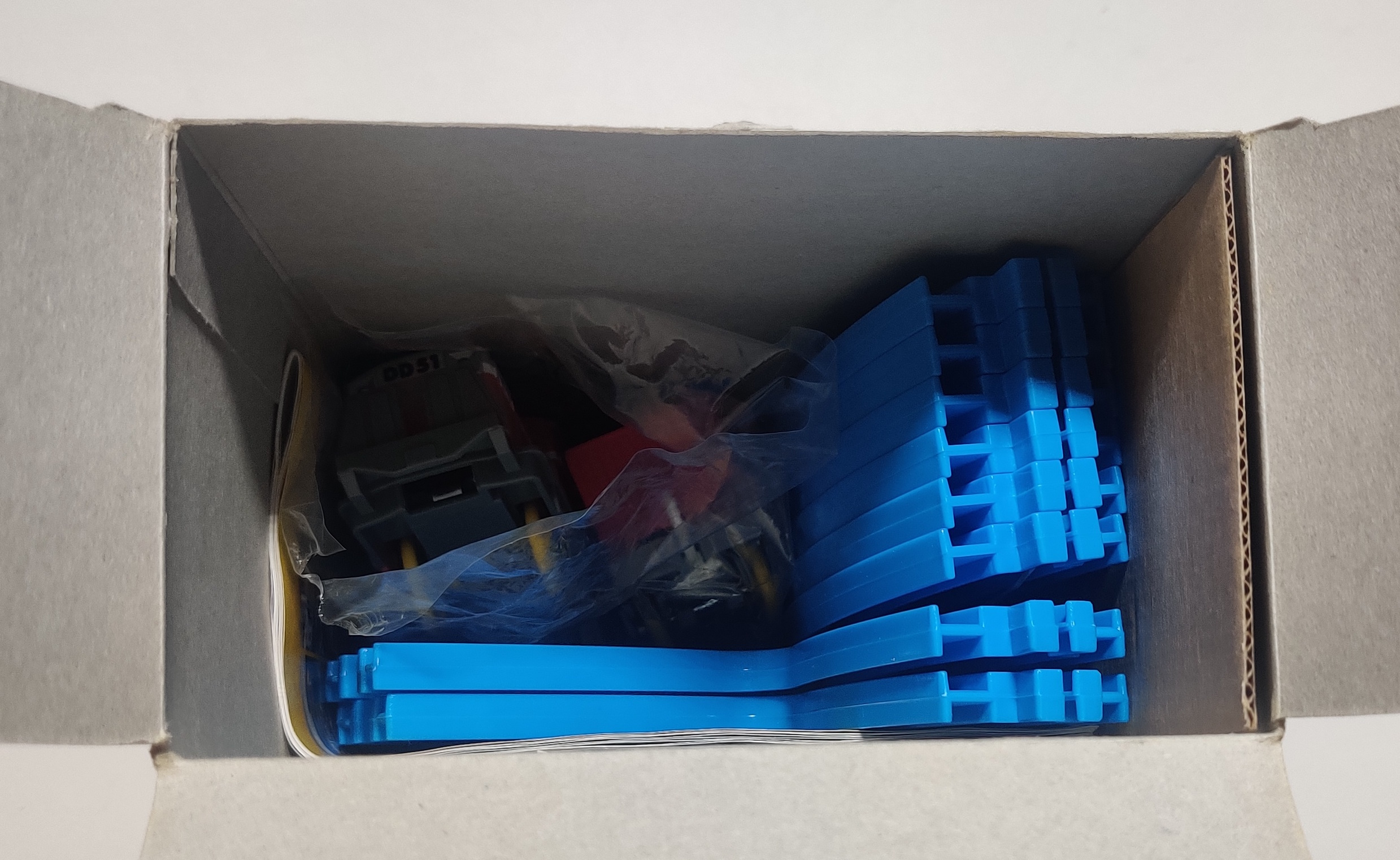
I believe my example of the set may have been unopened before the seller opened it to take photos of the contents. The accessory bag is still sealed and the rest of the components looked unused and were complete. The signals are early 2000s made in Thailand examples with the added rim around the red base. Under a small cardboard tray are the rails and rolling stock.
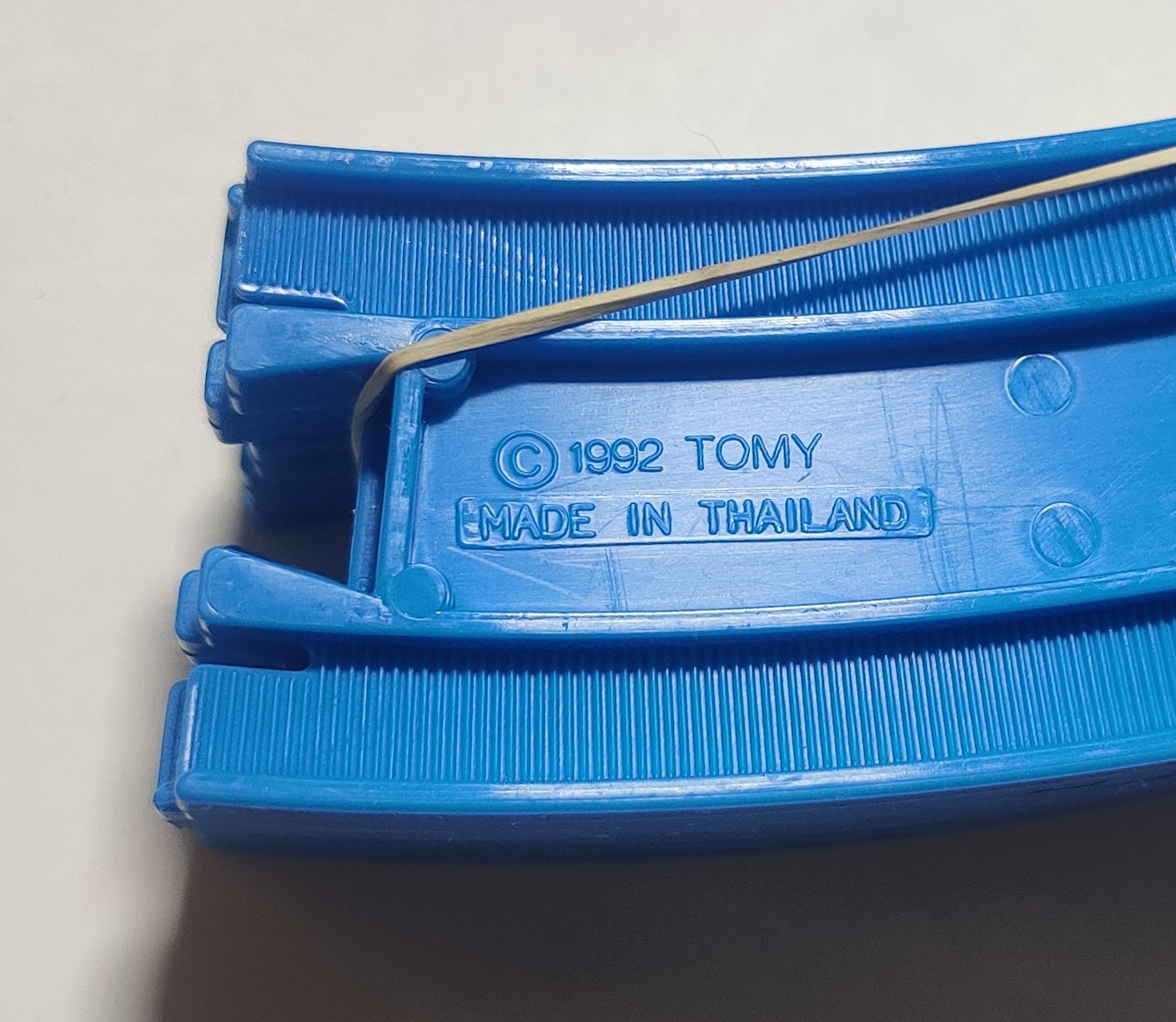
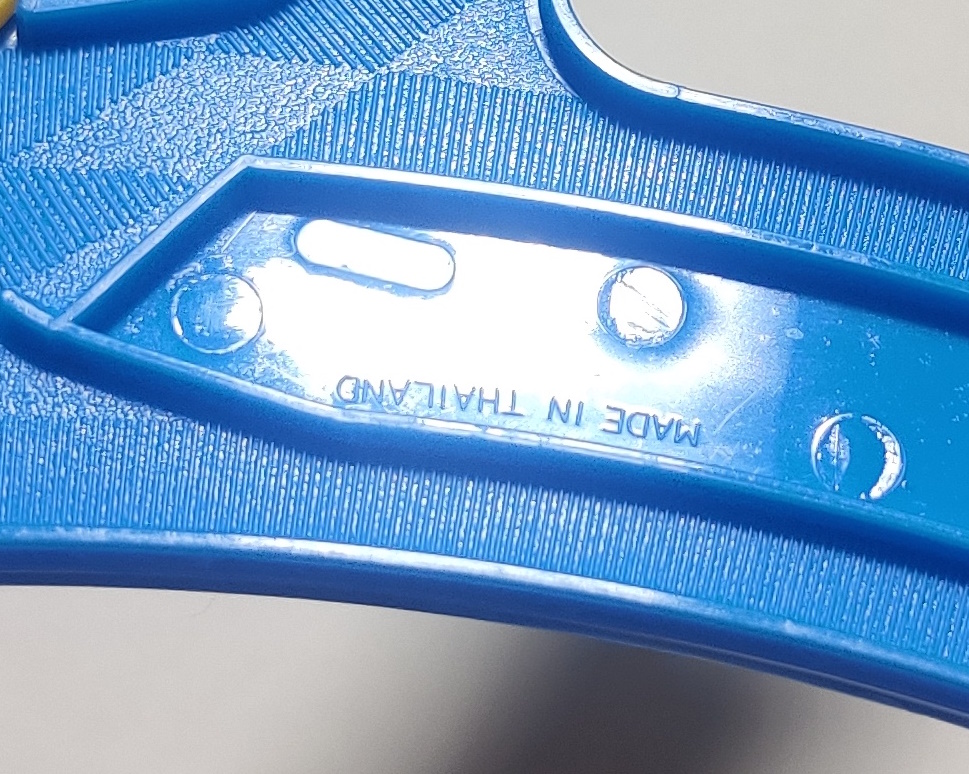
The rails in this set are made in Thailand. The curves are treaded rails while the figure eight turnouts are treaded over roughtop. Both types of rails are updates of the 1992 made in Japan rail molds, with the Thailand markings on both types of rails showing where the Japan mark was covered.
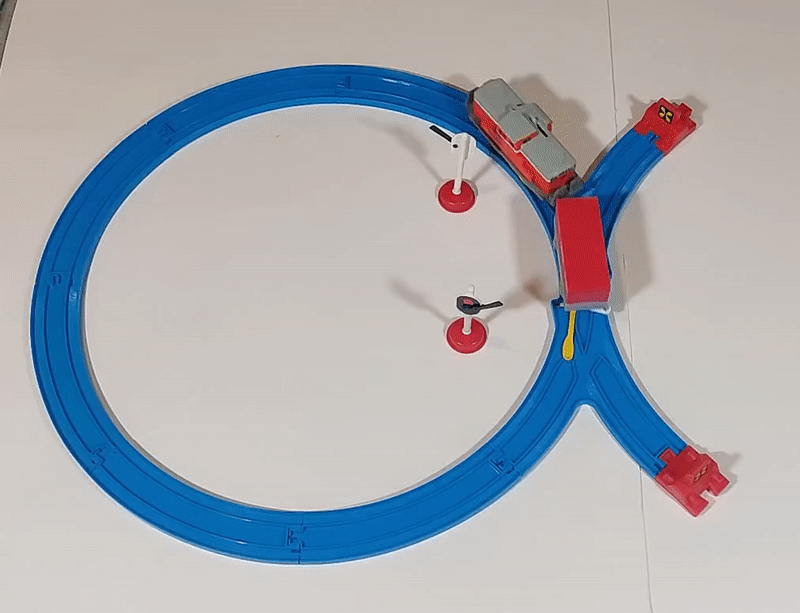
Click for video with sound
The set is, of course, very basic. The container car can just about be stored in one of the "sidings" while the DD51 goes around.

Click for video with sound
I also set up the expanded layout suggested on the back of the box. I have always liked the way you could piece together basically an entire set's worth of components from the individual accessory packs. A set with both a larger and more involved accessory like the J-11 Signal Station as well as a smaller one like the J-18 Railroad Crossing with Sound and two garages with a decent amount of track would be a pretty decent set to be honest, more interesting than some other sets that do not include a larger set-exclusive accessory.
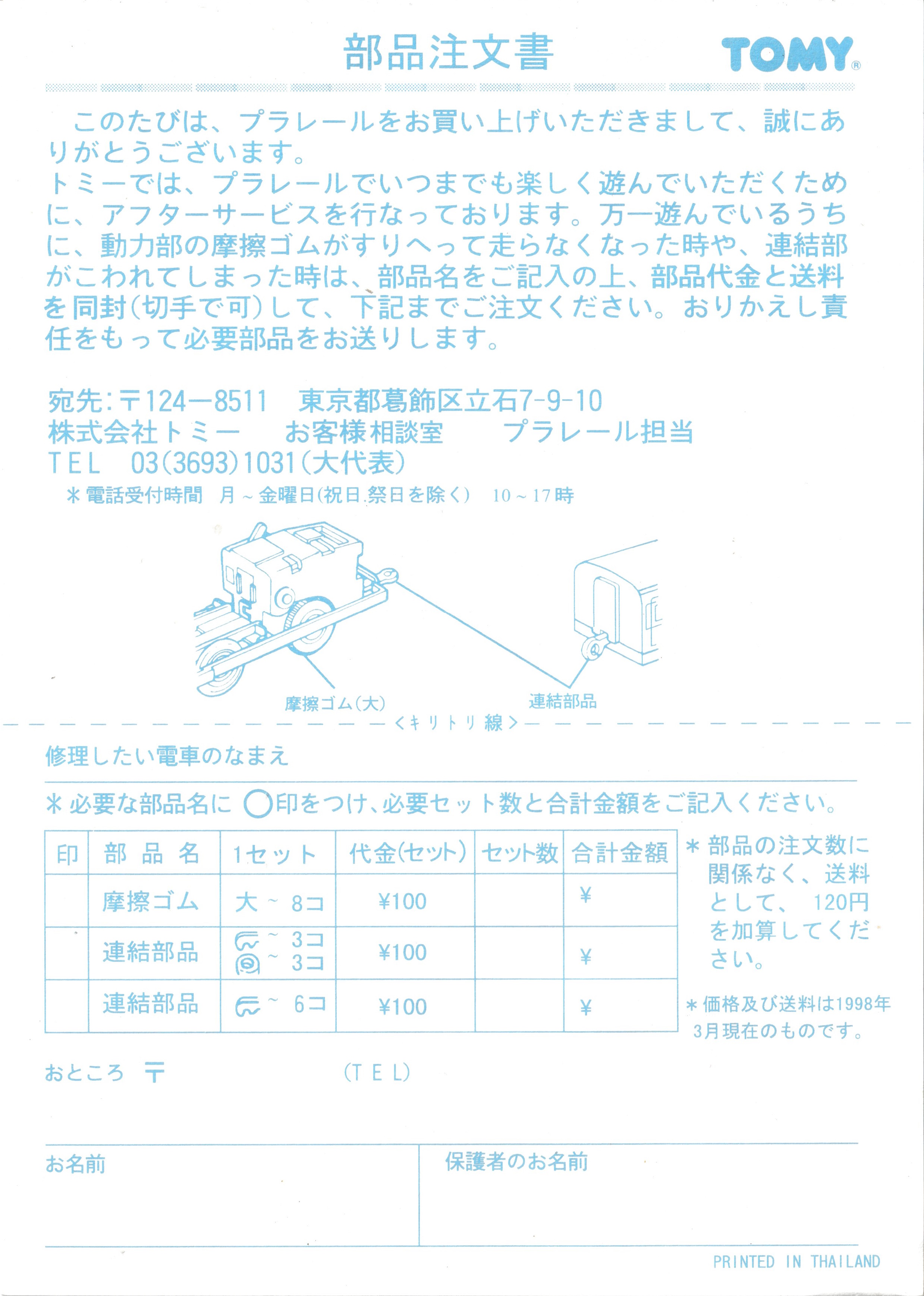
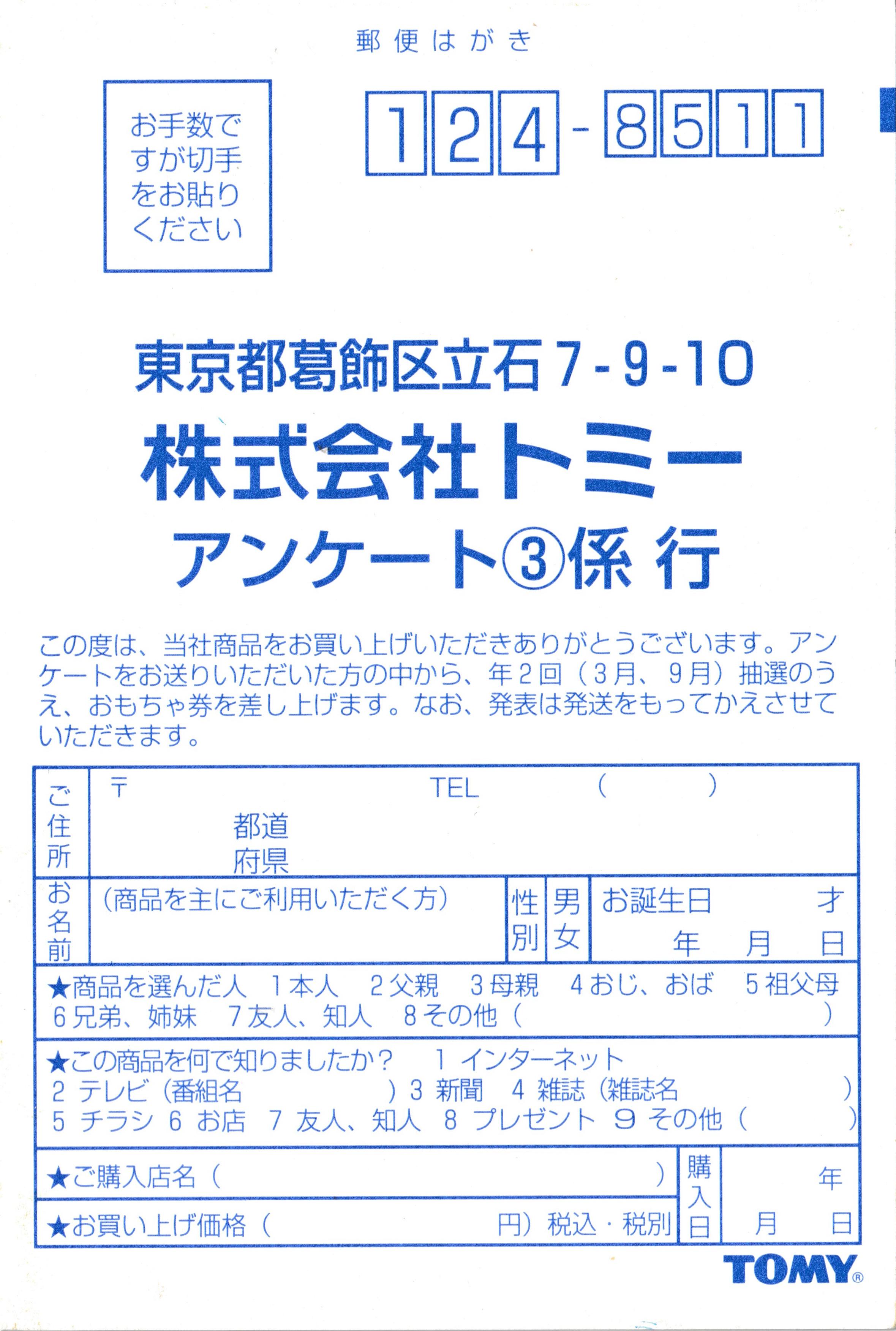
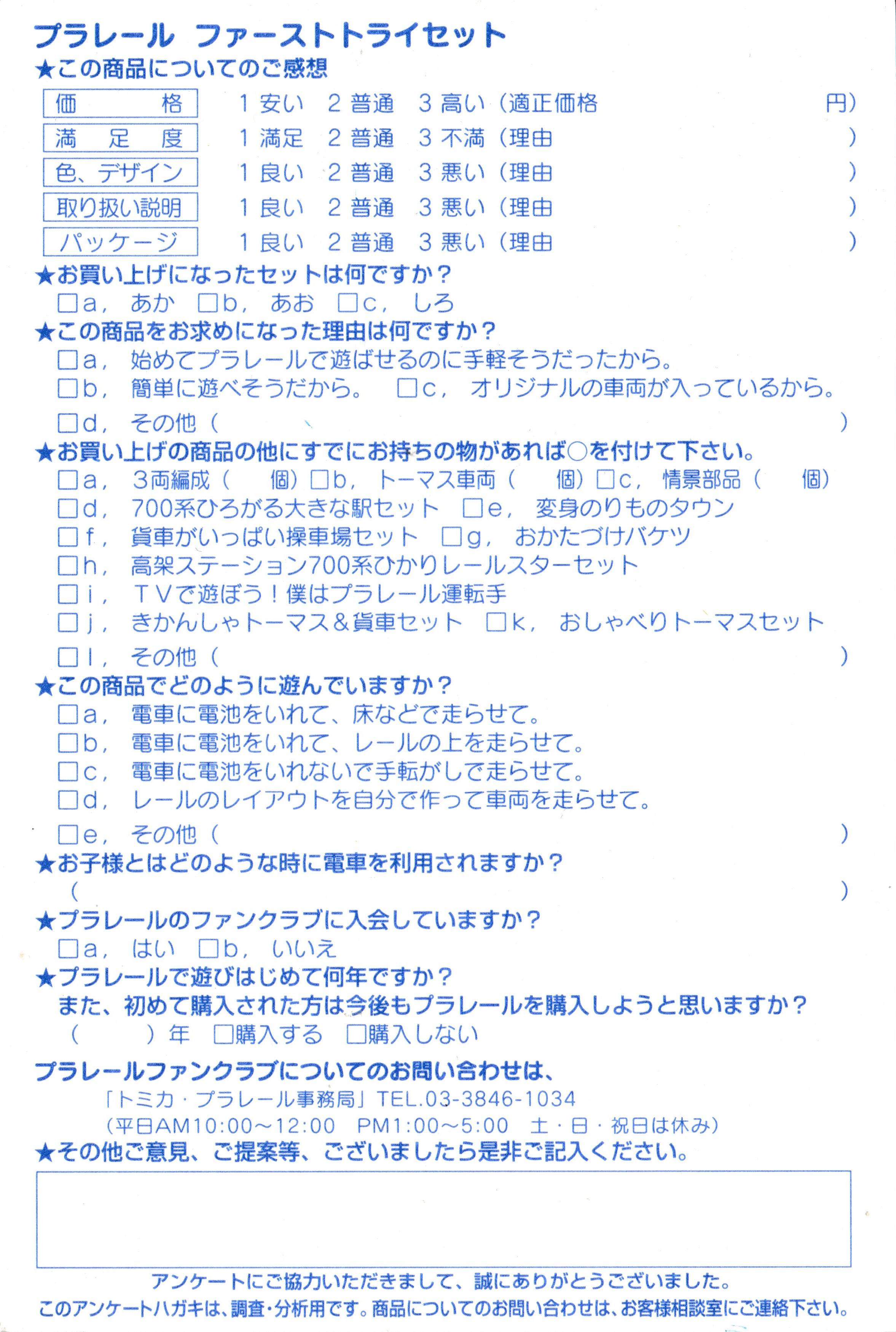
My copy of the set included a 2000-2001 Plarail catalogue, an order sheet for replacement couplings and traction tires that uses the old curvy Tomy logo, and a survey card. The survey card asks questions like who bought the set and if they own any other Plarail sets.
| Set name | First Try Set Red ファーストトライセットあか |
Release period | 2000 |
| Train rating |
    
| Track rating |
     |
| Accessory rating |
     | Overall |
     |
| Notes: |
First Try Set Dark Blue (2001)
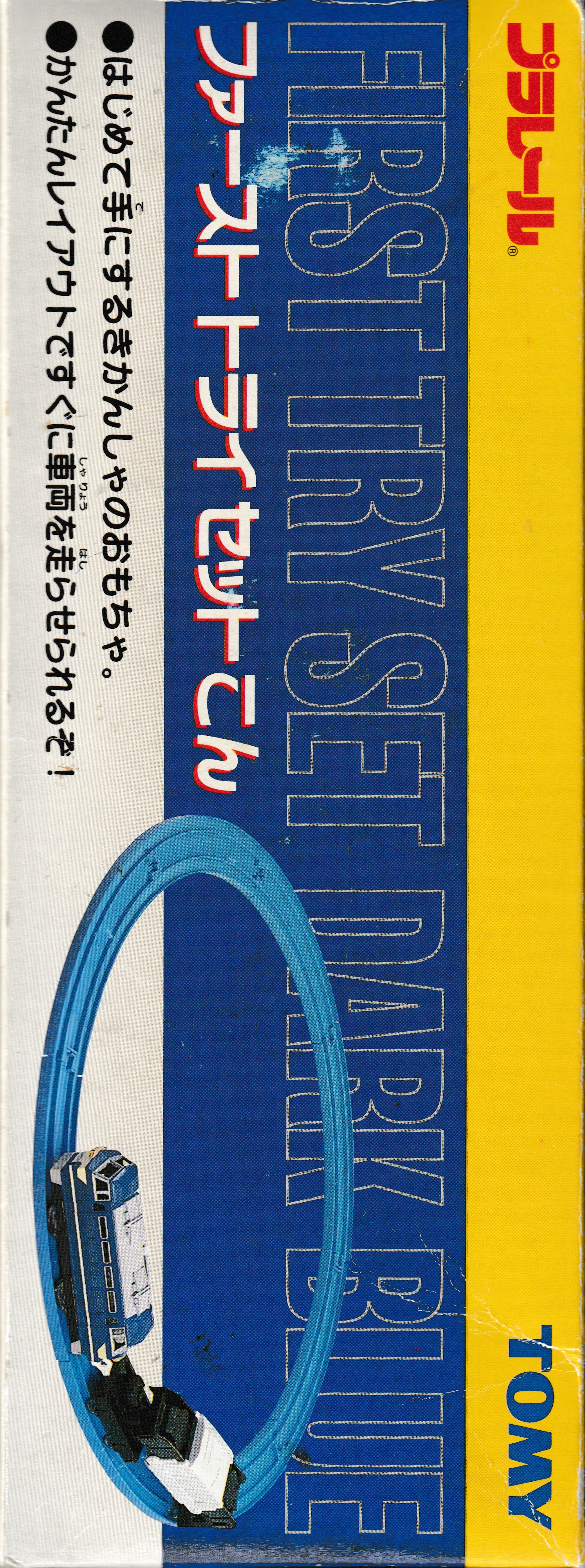
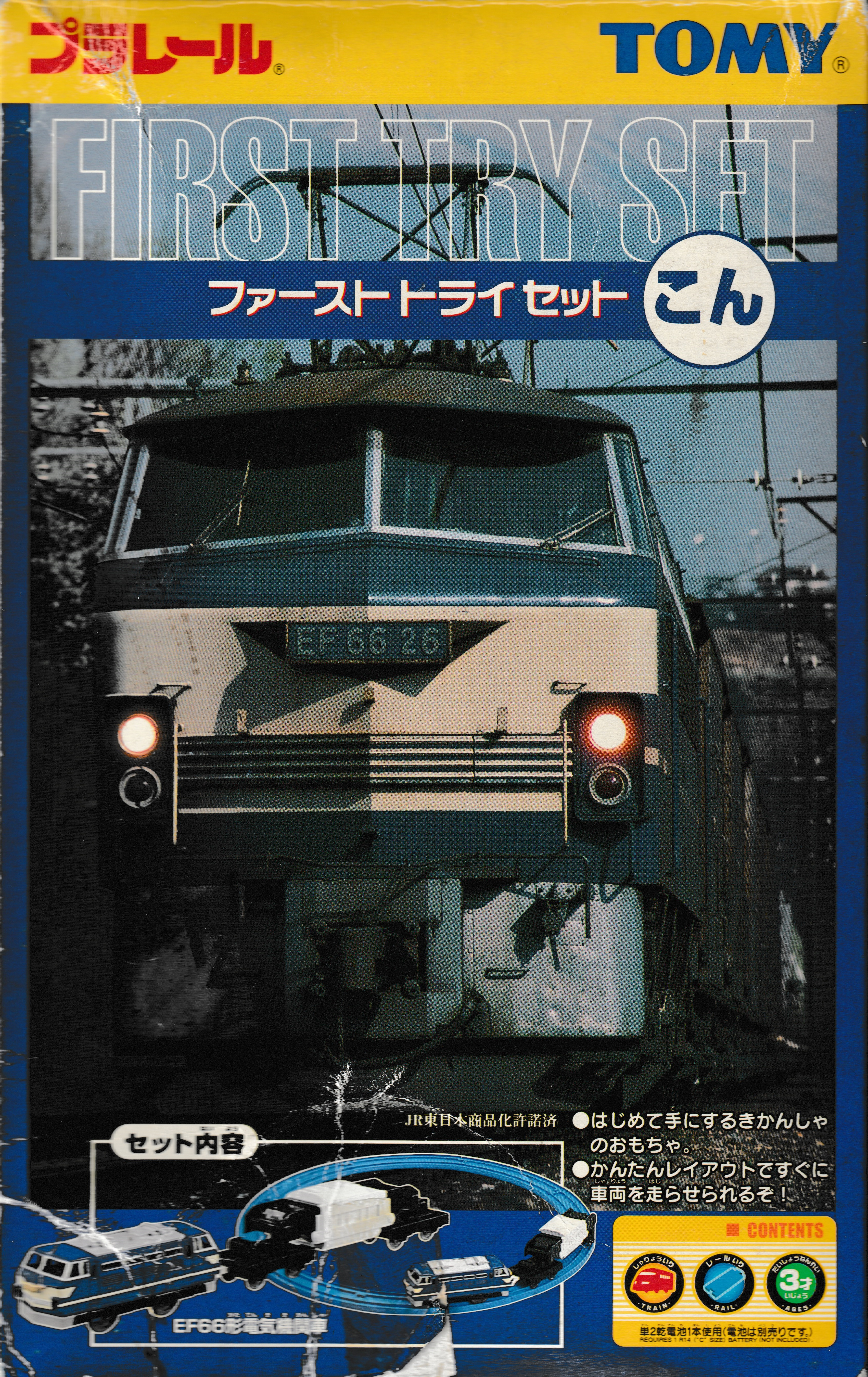
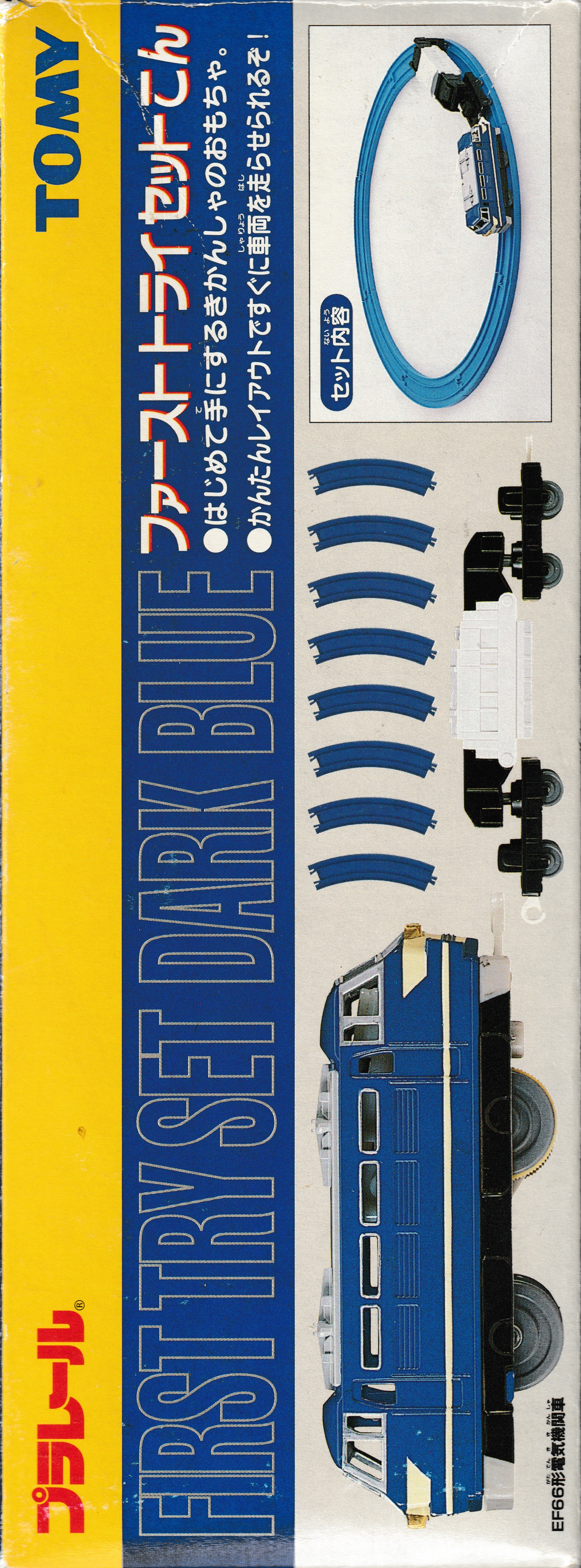
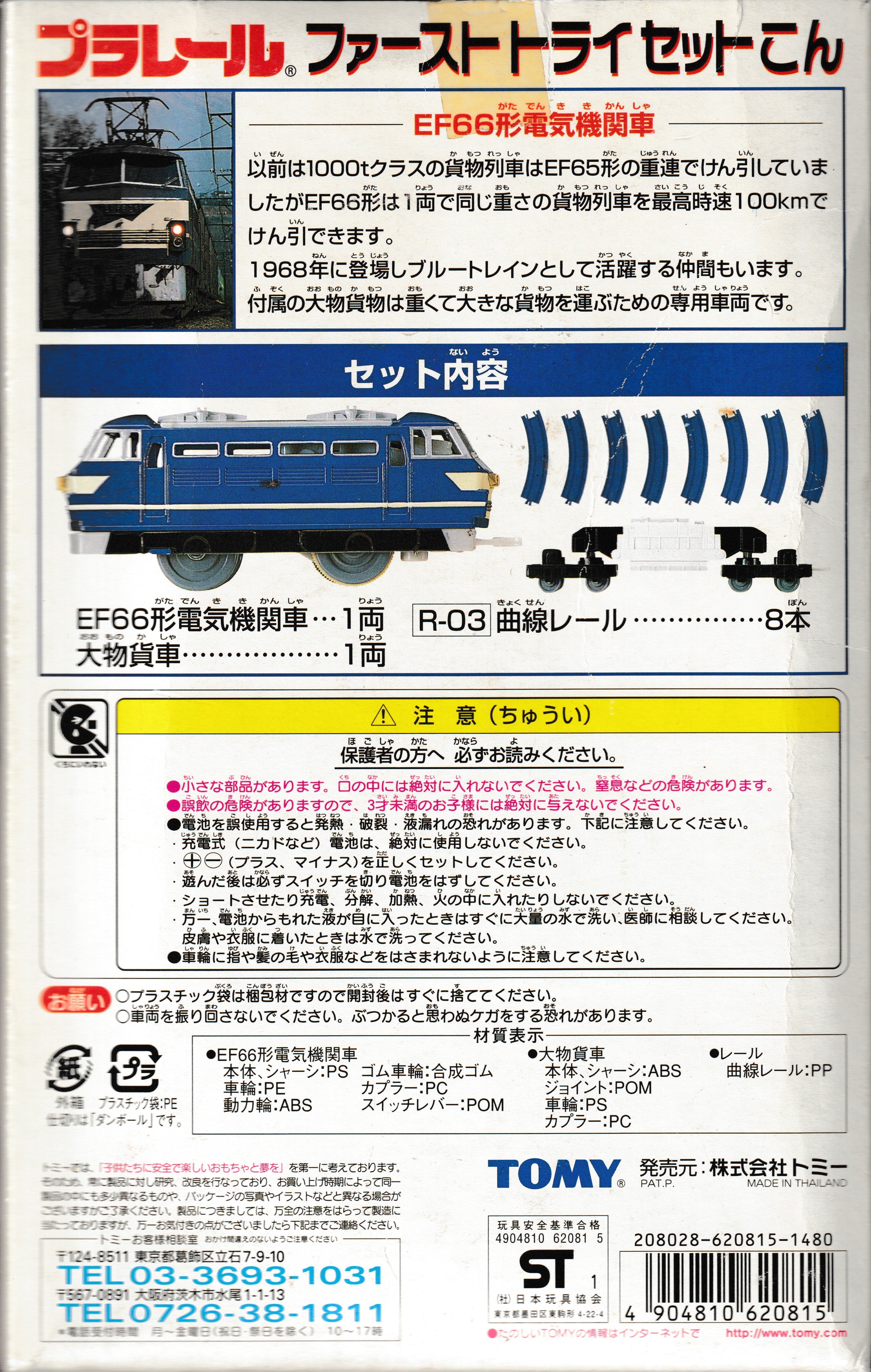
The First Try Set Dark Blue was released in 2001 as part of the second wave of First Try sets along with green, black, and yellow. The set includes an EF66 with the running number EF66 11, whose real life counterpart was built in the first batch of EF66s in August 1968. EF66 11 was refurbished by JR Freight and is now preserved at the Railway Museum in Saitama, Japan.
The back of the box says of the EF66 and car (approximately):
In the past, 1000-ton class freight trains were pulled by EF65
series trains. The EF66 series, however, can tow a freight train
of the same weight at a maximum speed of 100 km/h. They first
appeared in 1968 and are still active as blue trains. The attached
large cargo car is a dedicated car for transporting heavy and
large cargo.
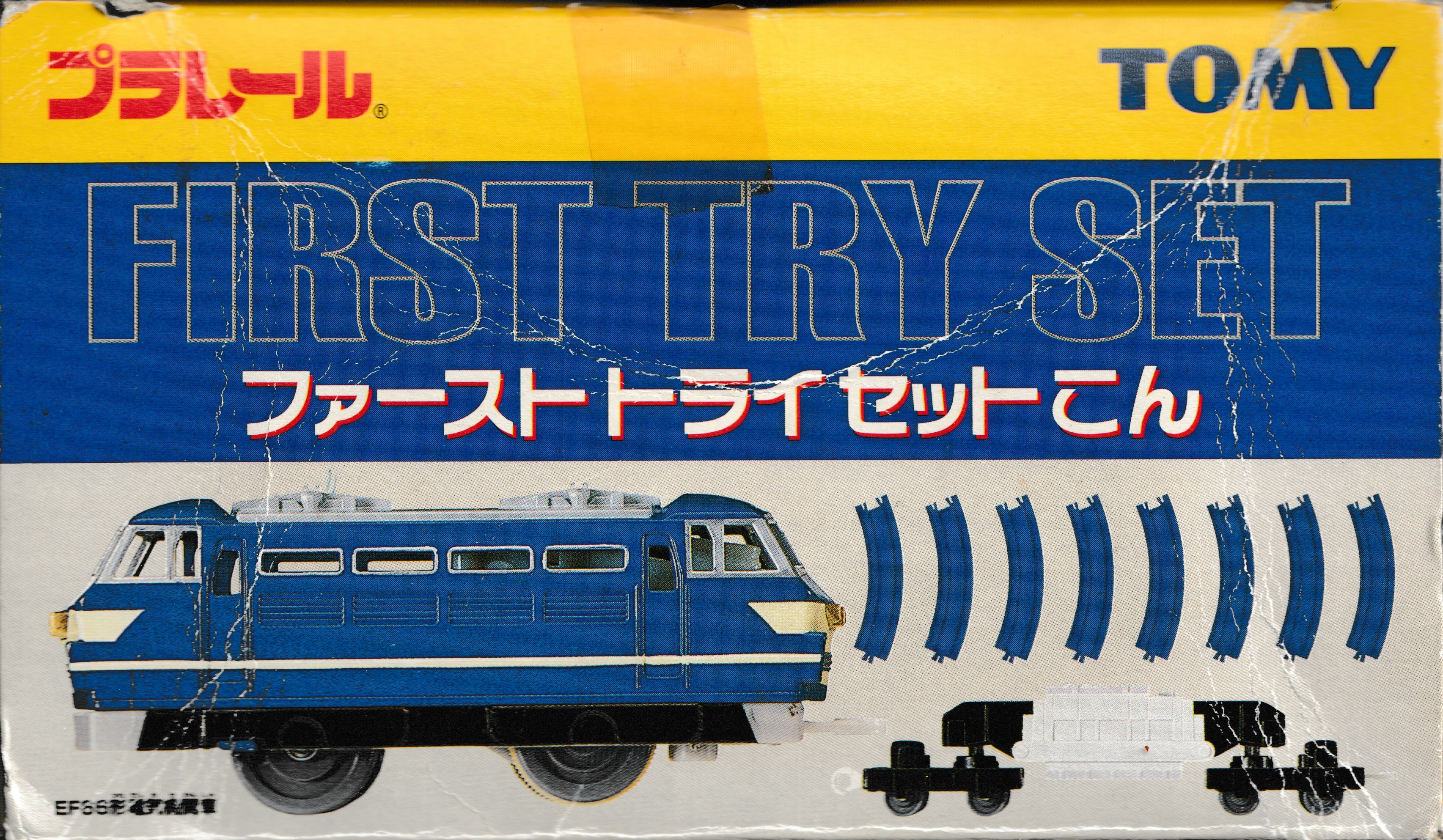
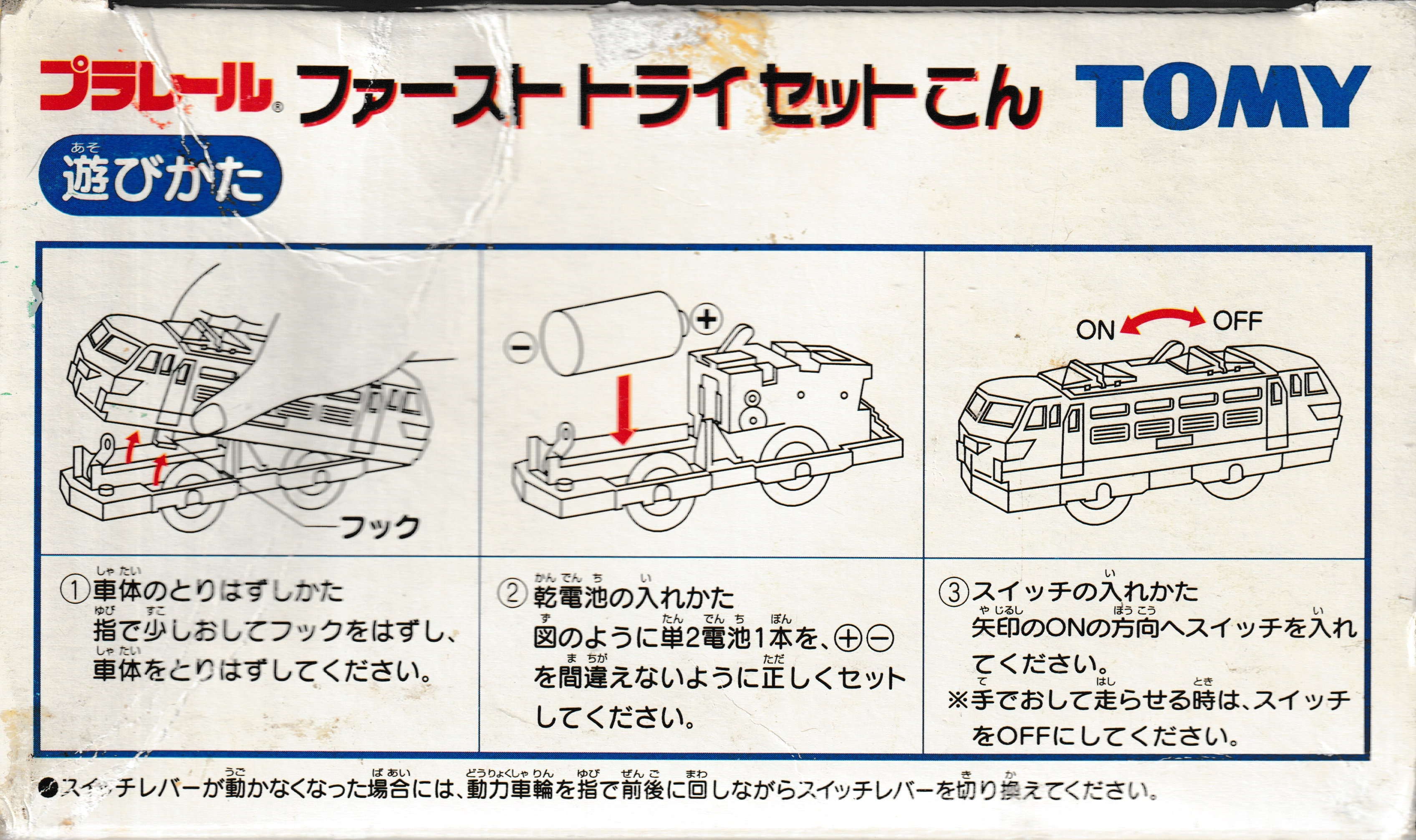
Set contents
| Quantity |
Item |
Photo |
|---|---|---|
| 1 |
EF66 (old chassis new power, number EF 66 11. Exclusive
detailing but not running number) |
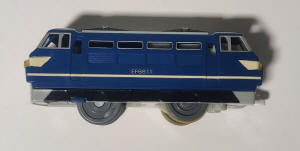 |
| 1 |
Schnabel car (大物貨車, literally "big goods
wagon," set-exclusive black coloring) |
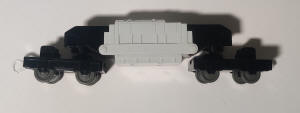 |
| 8 |
R-03 Curve Rail |
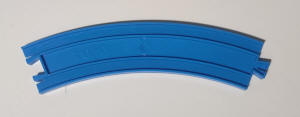 |
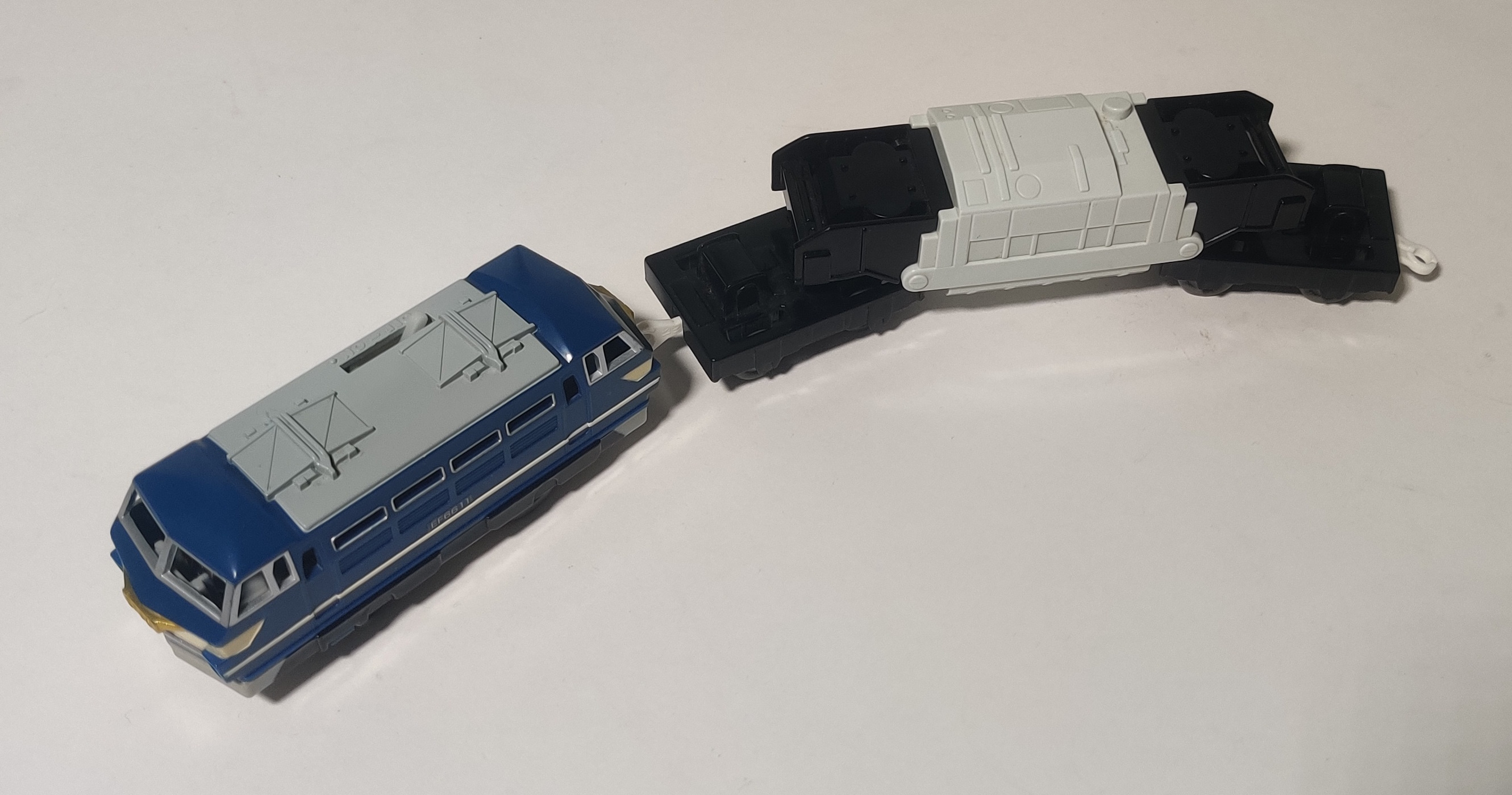
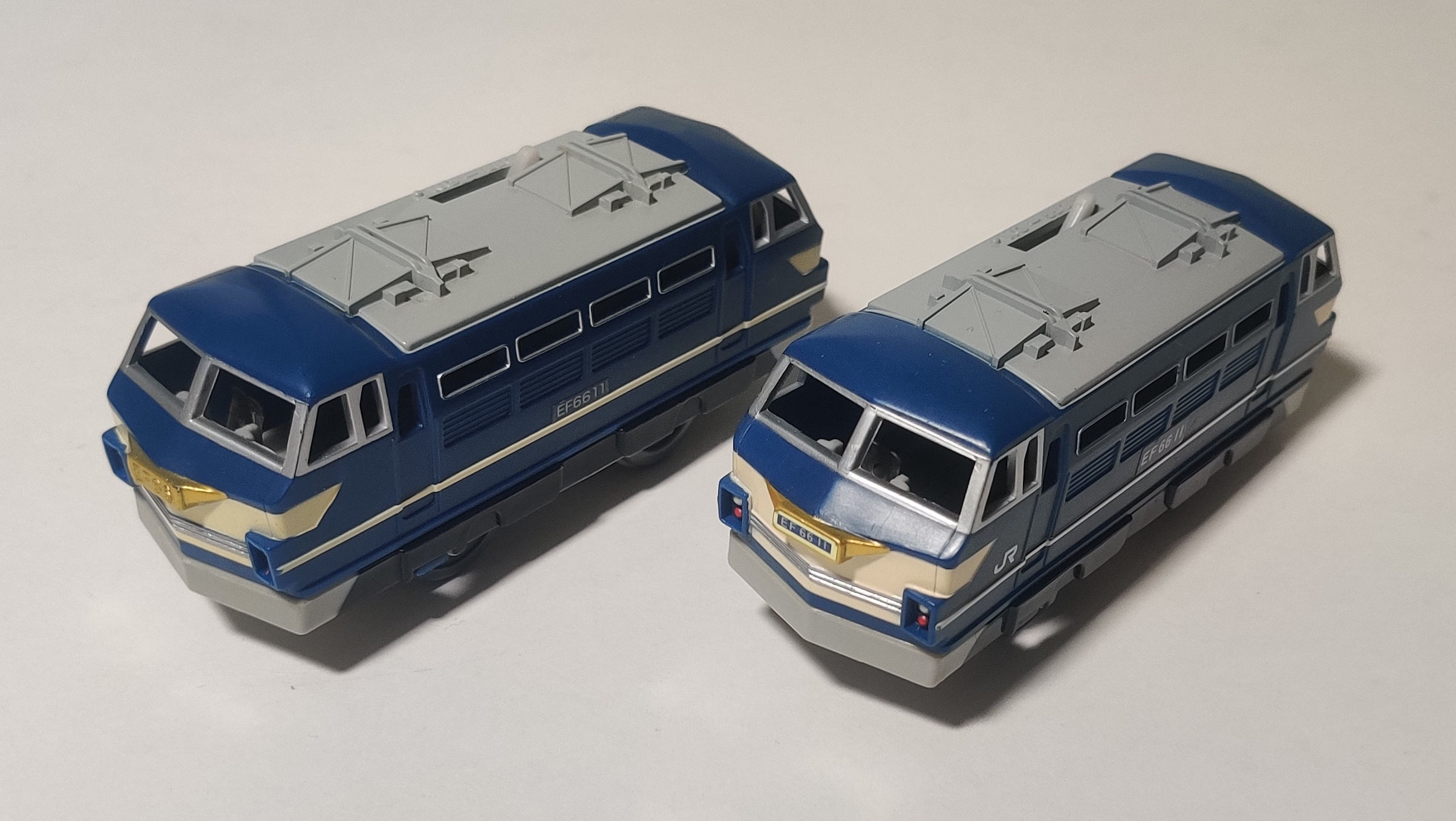
This set includes a nicely-detailed EF66 with the running number
EF6611. The molding is descended from the old
Round-Trip
EF66 (in
fact, the shell of the EF66 in this set fits on the old power
Round-Trip EF66 chassis) and a Schnabel car
carrying some sort of large machine. The layout is a simple circle
with no other accessories. A similar Plarail model of EF66 11 was
released
individually in 2003 with slightly different detailing (right).
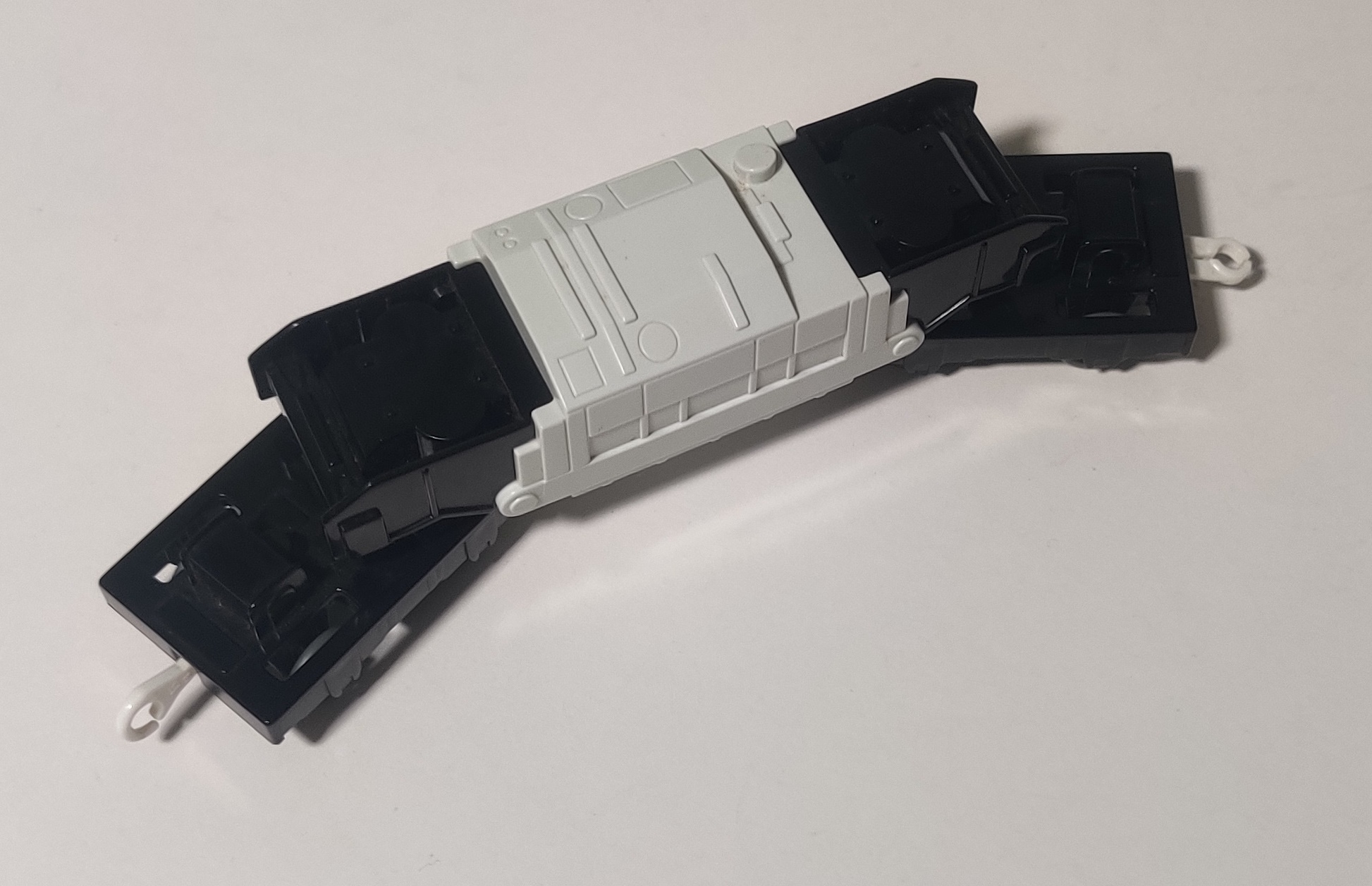
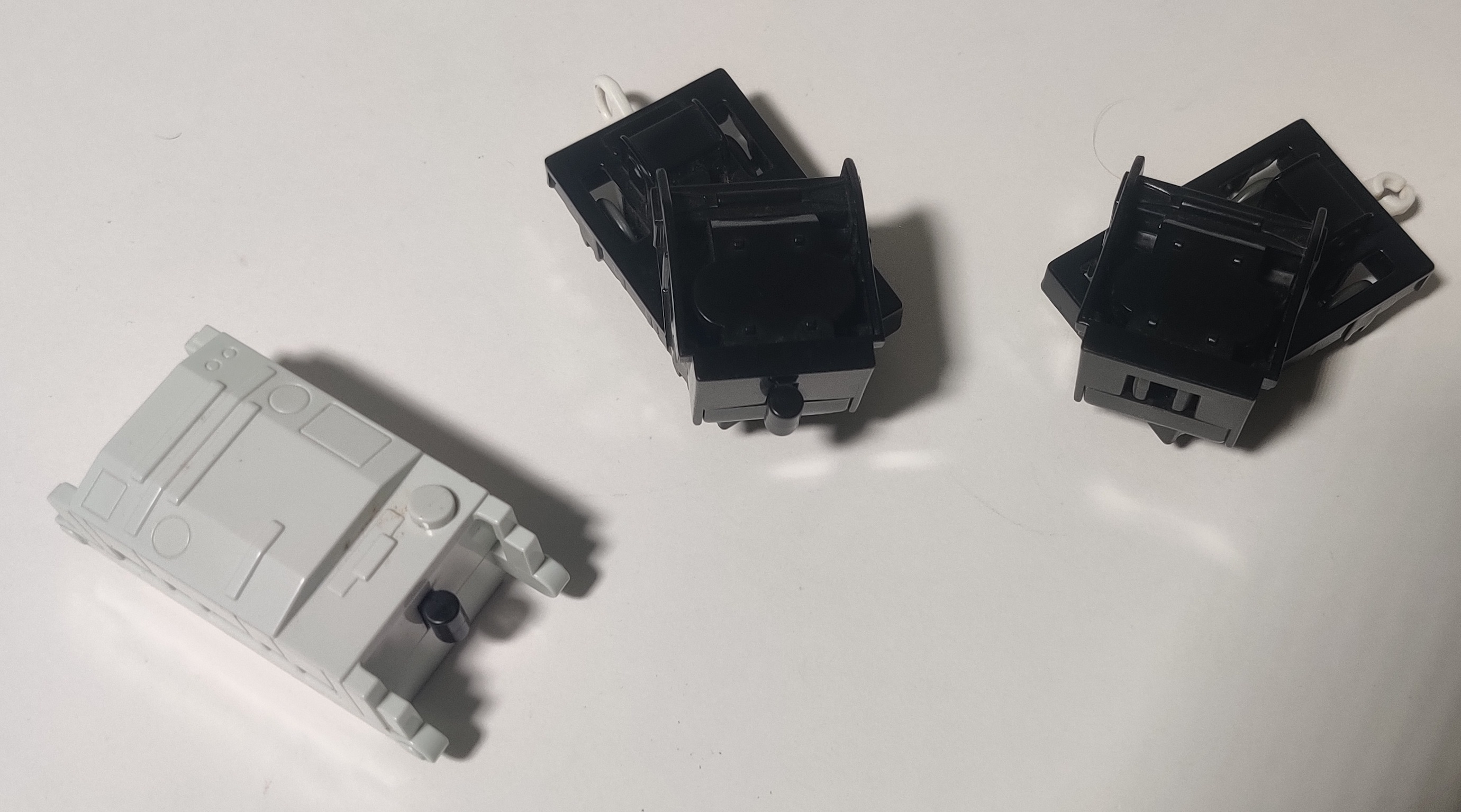
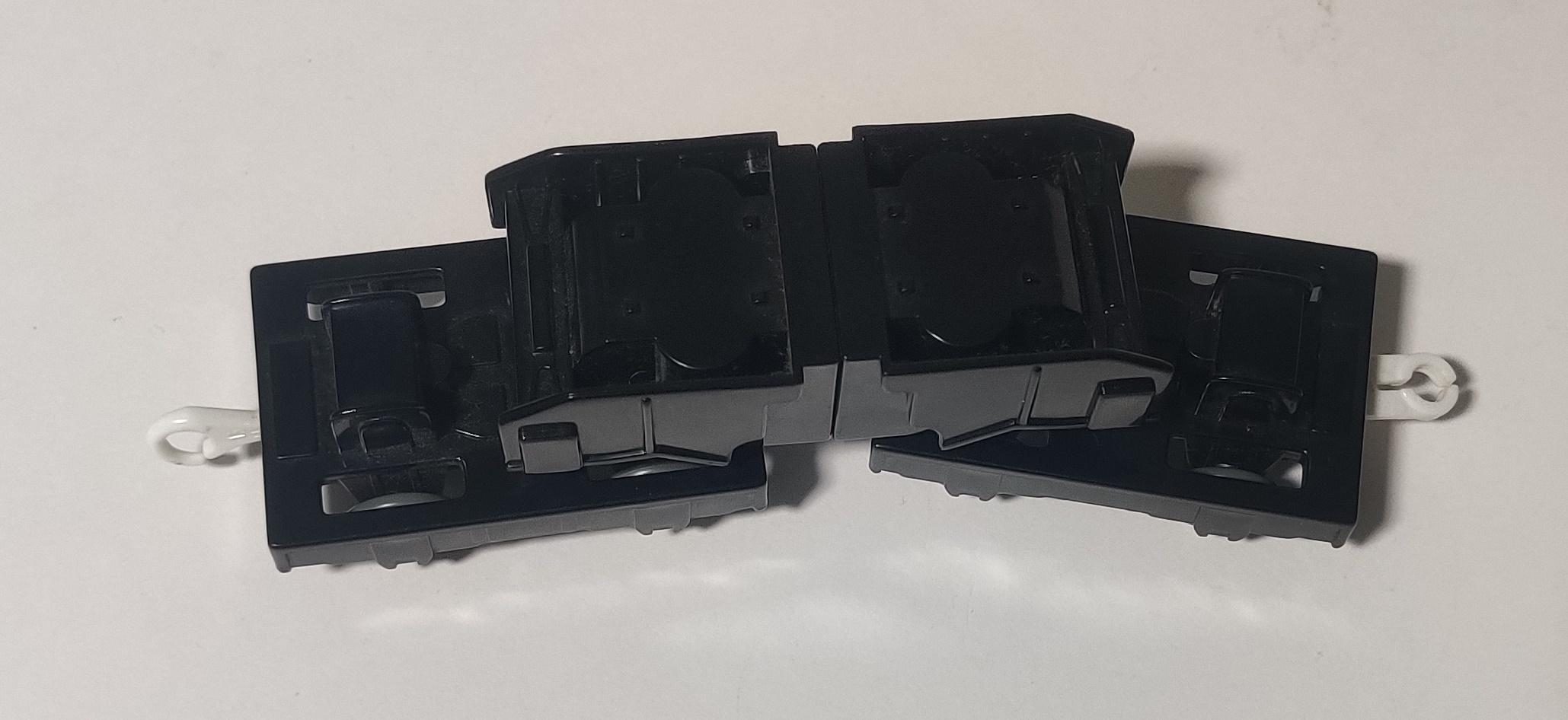
The Schnabel car in the set was a new molding for 2001 and was much more commonly available in blue instead of black with the EF210 Momotaro. The car is made up of two bogies with the two supporting "arms," one with a protruding peg and the other with a catch. The machine has a peg on one side and a catch on the other, allowing the machine to be loaded into the car or for the two bogies to be connected directly to one another with no load. This mimics the real-life design and use of Schnabel cars, which are fitted to either ends of large heavy machinery where it can then be carried by train and, when not carrying anything, the two portions can be connected together to one another and run like an odd but approximately normal freight car.
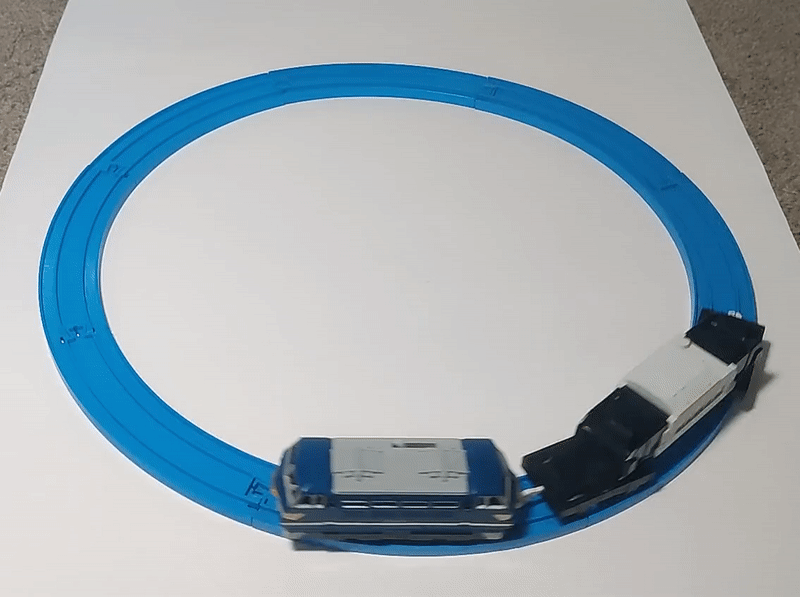
Click for video with sound
The track (only a circle) and accessories (none) are somewhat of a letdown. Unlike the Red set and other older First Try sets there are no switches to expand the layout with more track or sets and there are absolutely no accessories leaving only the engine and the play feature of the Schnabel car. It becomes boring after a short while, and it seems you would want your "first try" of Plarail to be a little more engaging. The curves that came in my set were a clearly-not-original mix of period, older, and newer rails, some dating back to the roughtop made in Japan rails. I would guess that the second wave sets originally came with track similar to the earlier First Try sets or potentially early squared-off logo rails.
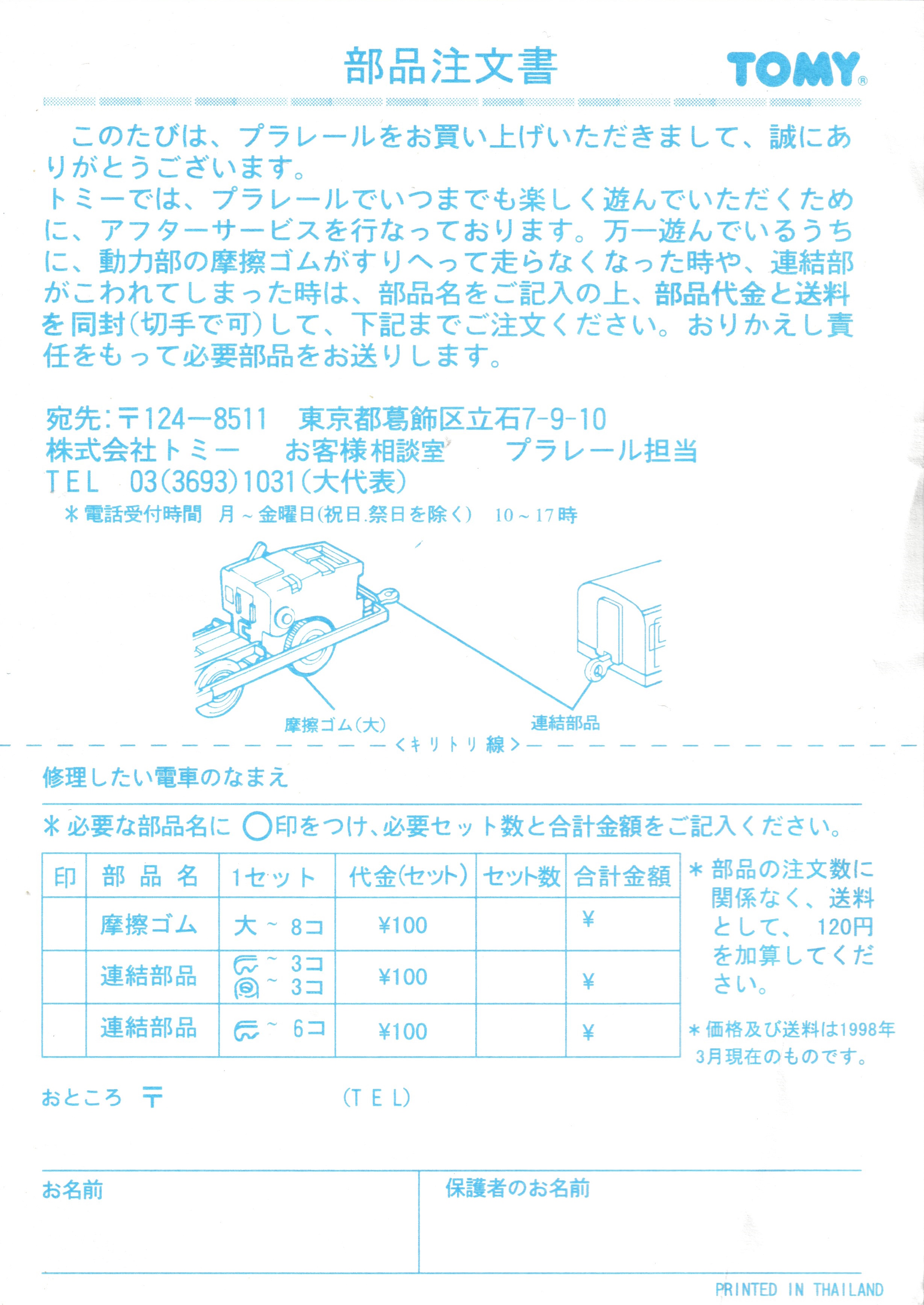
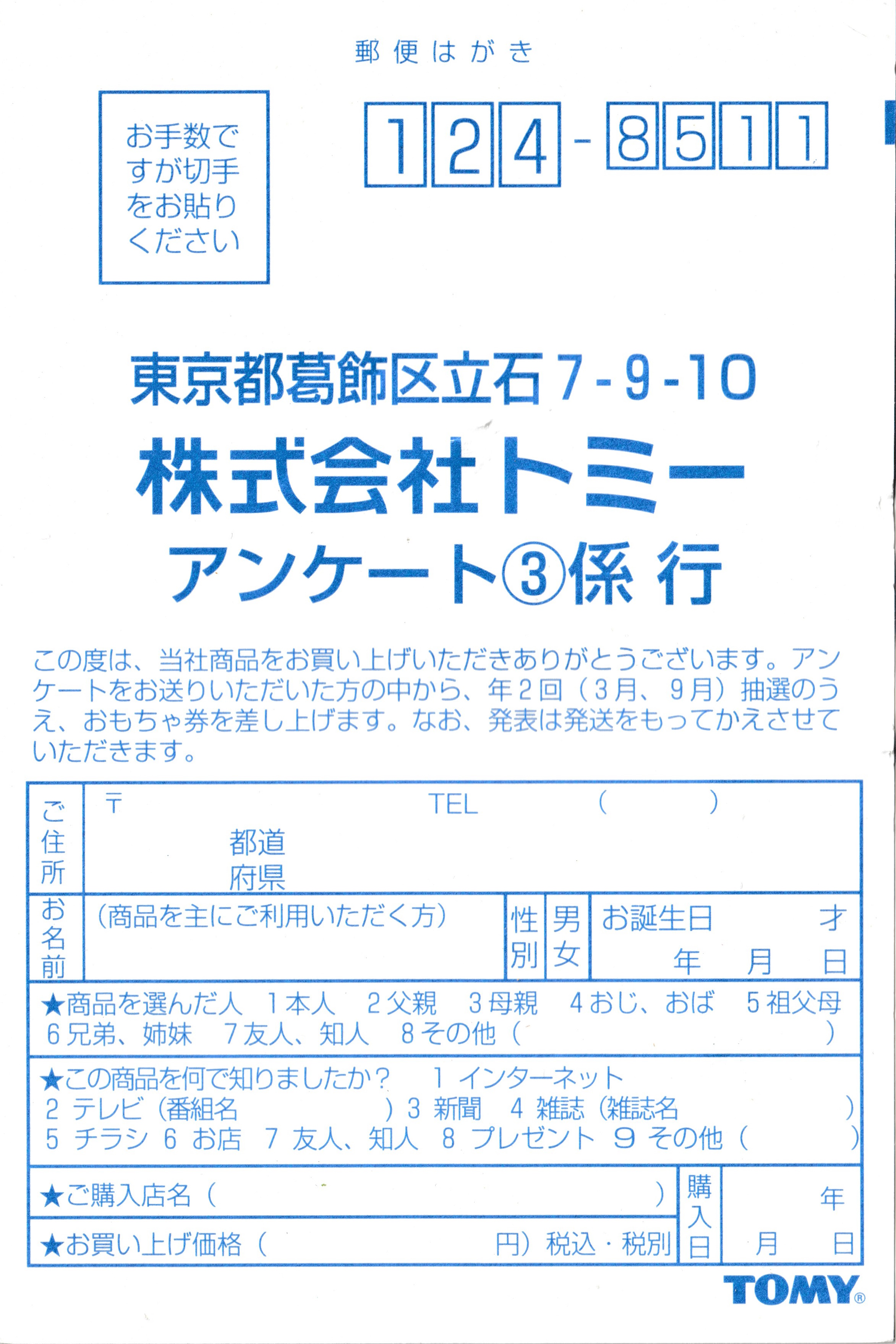
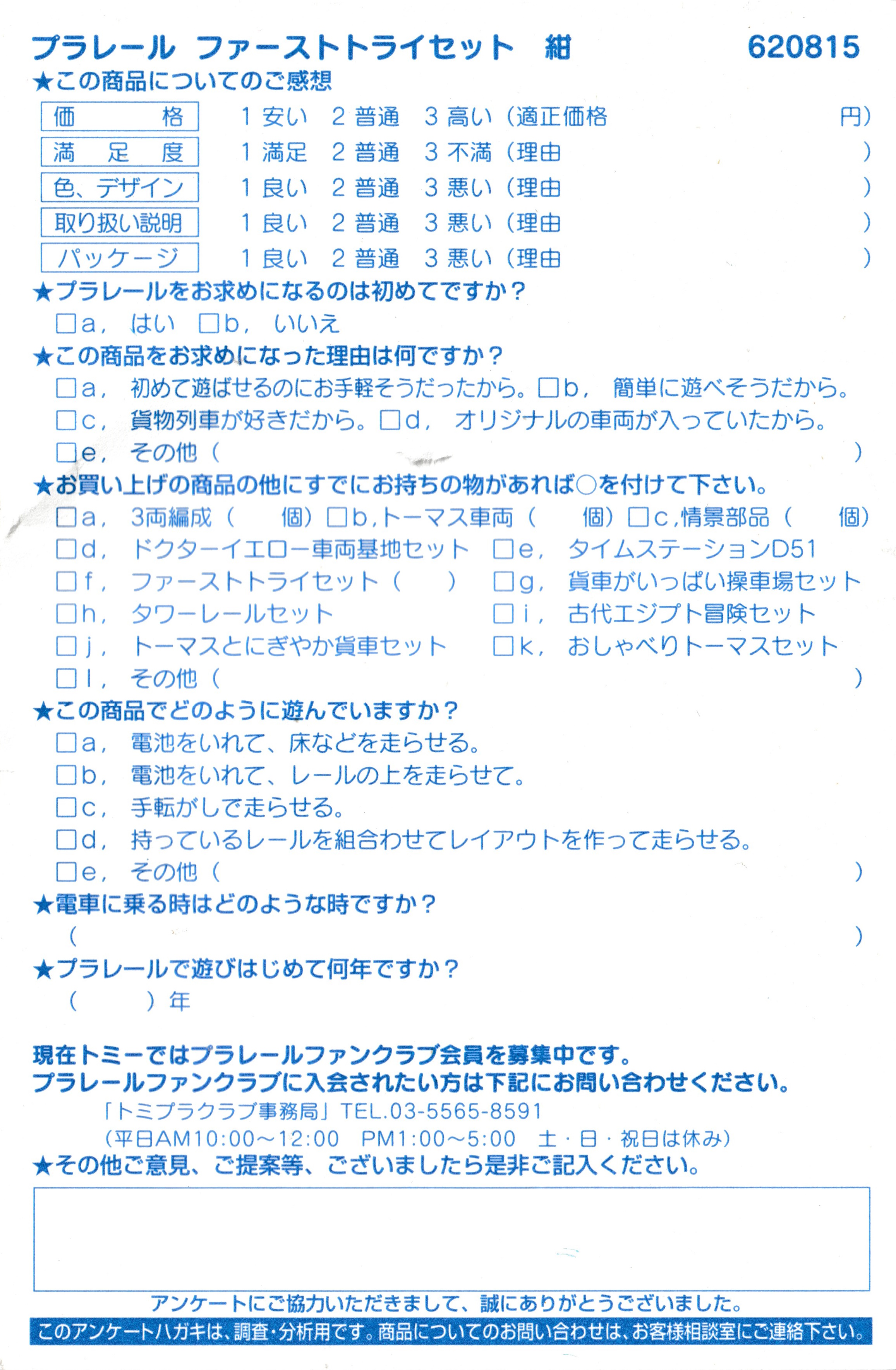
My copy of this set also came with a replacement parts sheet (still using the old curvy logo) and a new survey card.
| Set name | First Try Set Red ファーストトライセットあか |
Release period | 2001 |
| Train rating |
    
| Track rating |
     |
| Accessory rating |
     | Overall |
     |
| Notes: |
In general I think the first wave of First Try sets were cooler overall. All three sets features different types of switches and multiple accessories, while three out of the four second wave sets come with only a circle of track with only one of those three including an accessory (a single signal in the Green set). It seems the second wave of sets focused more on the trains, with the three circular sets coming with a standard style three car set (the Schnabel car in the Dark Blue set was released as both cars of a standard three pack in the EF210 Momotaro) and the fourth set focusing on a steam locomotive with a small garage and switch setup without any continuous loop of track to run on. The Dark Blue and Black sets depict specific running numbers of locomotive while the DD51 in the first wave did not include a running number. Presumably these changes were reflective of Tomy's push towards more accurate vehicles in the 2000s as well as the much longer trend of cheapening out on accessories. Unlike the first wave sets, whose boxes include suggestions for combining all three sets together or with separate accessories, the second wave box does not show any ideas for expanding the sets and there is more focus spent on the real-life train the toy emulates.
In 2002 a new series of My Town Train Sets were released that focused on a train local to different regions of Japan with small loop layouts that can all be connected together to form a rough map of Japan. Although none of these sets come with any accessories, they strike a good balance between the rail and train aspects of the set.